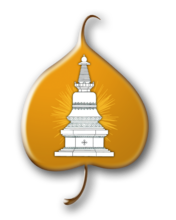The Day of Miracles is an auspicious day for prayer and practice, as the karmic results of positive actions are multiplied exponentially. Students are encouraged to devote some special time to engage in positive actions, and heart practices; to rejoice in the positive actions of others throughout the world on this day, and to dedicate the merit to the benefit and eventual enlightenment of all sentient beings.
This day is the culmination of Monlam Chenmo, a two-week period during which the Buddha performed various miracles. The two weeks of holy days are observed with the Tibetan Great Prayer Festival beginning on Tibetan New Year, and, on the final day - the Day of Miracles - many fesitvals and rituals are held.
At Kadampa Center, we will celebrate the Day of Miracles with a Shakyamuni Buddha Puja at 1:30 pm.
The Great Prayer Festival was established in Tibet in 1409 by Lama Tsongkhapa to commemorate Shakyamuni Buddha’s performance of miracles at Shravasti. According to the Sutra of the Wise and Foolish, six great Hindu teachers, representing the six great schools of Hinduism, challenged Shakyamuni Buddha to a competition of miracles. Typically the Buddha purposely avoided displays of powers because people are easily interested in mundane powers instead of practicing Dharma. However, through his clairovoyance, he understood they wouldn’t be subdued unless he performed the miracles, so he outdid them for 15 days, and the six scholars converted to Buddhism. The main purpose of the Great Prayer Festival is to pray for the long life of all the holy Gurus of all traditions, for the survival and spreading of the dharma in the minds of all sentient beings, and for world peace.
Our Spiritual Director, Lama Zopa Rinpoche, encourages students to take the Eight Mahayana Precepts on holy days. For more about the practice of precepts, please read The Direct and Unmistaken Method by Lama Zopa Rinpoche. Rinpoche advises many other practices on holy days as well.
Since the holy days are based on the Tibetan lunar calendar, according to our Western calendar they fall on different days every year. Please see our calendar for specific dates and a schedule of events.

